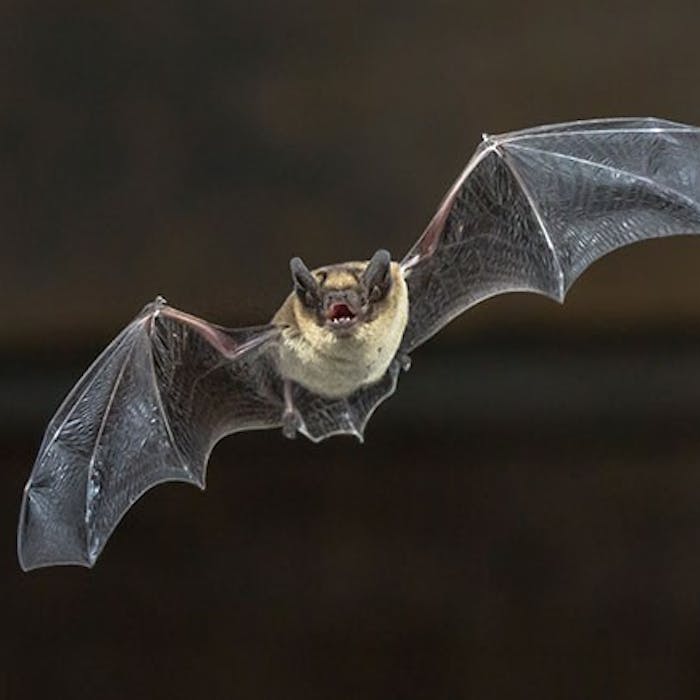
The Pipistrelle - our smallest bat
Britain is home to 18 species of bats, of which the common pipistrelle bat is the smallest. It has a wing span of about 22 to 25 centimetres with an average life span of four to five years. These bats are common to woodland and farmland but are also found in towns, where the females roost in lofts and buildings when rearing young.
They can often be seen at dusk flitting among trees and hedgerows seeking insects to eat.
Most British bats are small with wingspans shorter than a sparrow, though our largest bat, the noctule, can have a wingspan up to 50cm. Bats may be superb fliers with their unique echolocation navigation system, which allows them to flourish at night when they do not need to compete with the birds.
The pipistrelle is a species of conservation concern in the UK, and a Species Action Plan has been created to restore its population to pre-1979 levels. Its decline has been attributed to a loss of foraging habitat due to agriculture intensification, and it is on the Red List for Britain’s Mammals, although it is currently categorised as of Least Concern.
During the summer, females form maternity colonies and have just a single pup each. They hibernate over winter, usually between November and April, but may come out to feed on warm days.
In flight bats are fast and jerky as they dodge about chasing small insects, which they can catch and eat on the wing.
Further reading
Links to external websites are not maintained by Bite Sized Britain. They are provided to give users access to additional information. Bite Sized Britain is not responsible for the content of these external websites.
